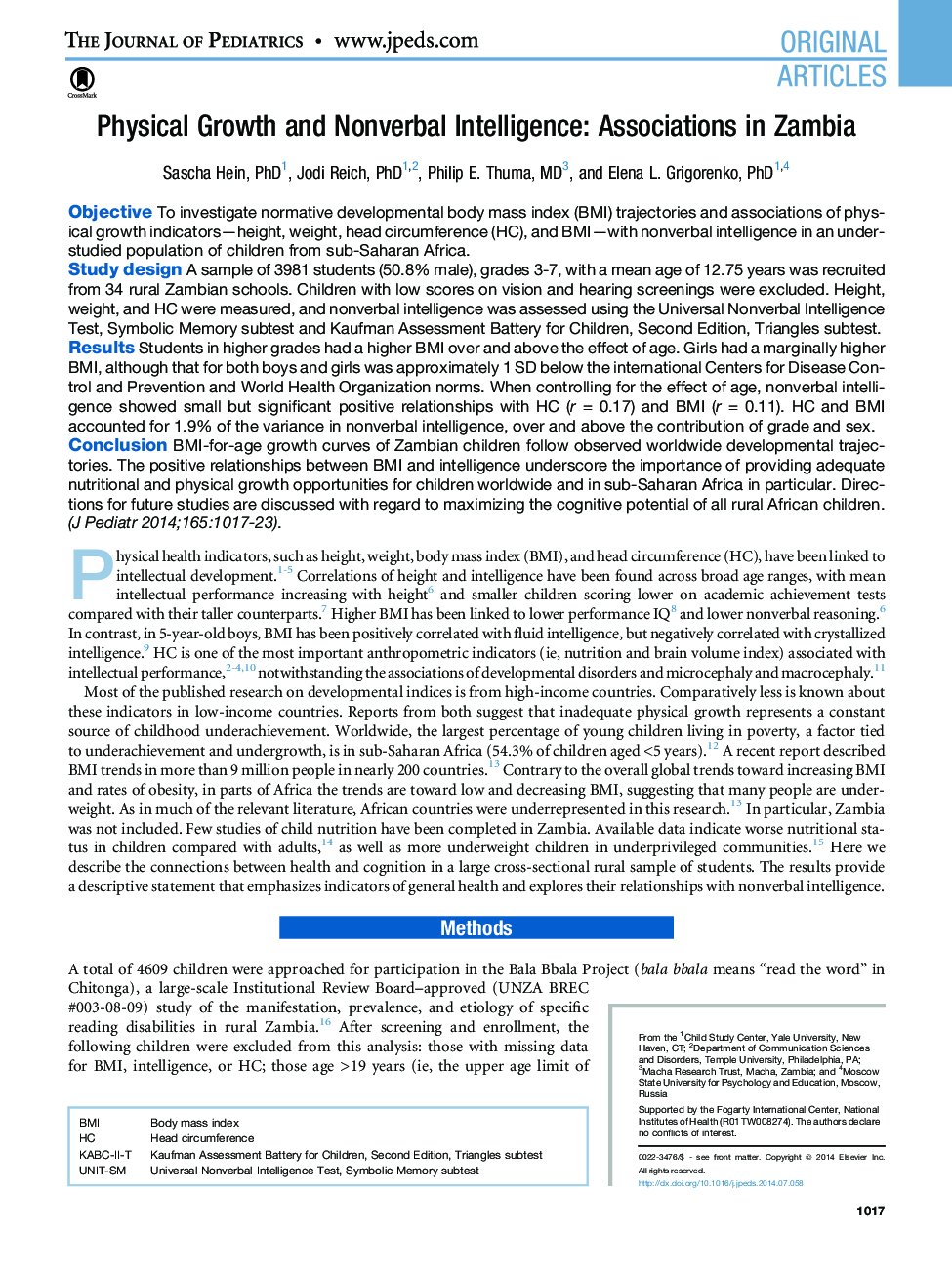| Article ID | Journal | Published Year | Pages | File Type |
|---|---|---|---|---|
| 6222073 | The Journal of Pediatrics | 2014 | 8 Pages |
ObjectiveTo investigate normative developmental body mass index (BMI) trajectories and associations of physical growth indicators-height, weight, head circumference (HC), and BMI-with nonverbal intelligence in an understudied population of children from sub-Saharan Africa.Study designA sample of 3981 students (50.8% male), grades 3-7, with a mean age of 12.75 years was recruited from 34 rural Zambian schools. Children with low scores on vision and hearing screenings were excluded. Height, weight, and HC were measured, and nonverbal intelligence was assessed using the Universal Nonverbal Intelligence Test, Symbolic Memory subtest and Kaufman Assessment Battery for Children, Second Edition, Triangles subtest.ResultsStudents in higher grades had a higher BMI over and above the effect of age. Girls had a marginally higher BMI, although that for both boys and girls was approximately 1 SD below the international Centers for Disease Control and Prevention and World Health Organization norms. When controlling for the effect of age, nonverbal intelligence showed small but significant positive relationships with HC (r = 0.17) and BMI (r = 0.11). HC and BMI accounted for 1.9% of the variance in nonverbal intelligence, over and above the contribution of grade and sex.ConclusionBMI-for-age growth curves of Zambian children follow observed worldwide developmental trajectories. The positive relationships between BMI and intelligence underscore the importance of providing adequate nutritional and physical growth opportunities for children worldwide and in sub-Saharan Africa in particular. Directions for future studies are discussed with regard to maximizing the cognitive potential of all rural African children.
